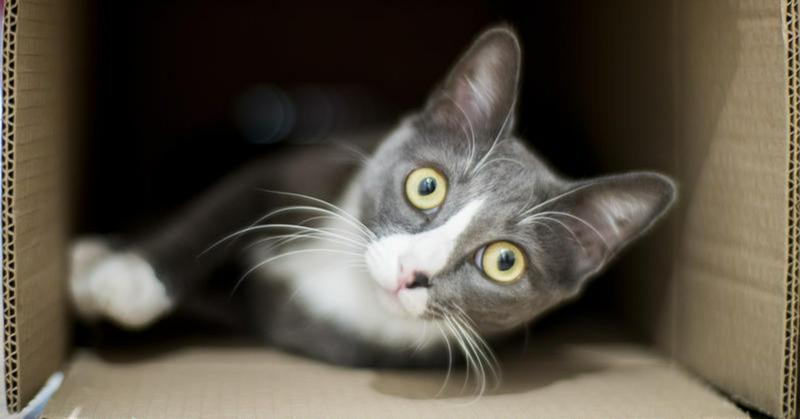Why Do Cats Sit In Boxes? The Origin Of "If I Fits, I Sits"
By | May 18, 2021

"If I fits, I sits" is a true adage of the internet age, but where did this adorable meme come from, and why are cats so obsessed with sitting in boxes anyway?
"If I Fits, I Sits"
If you were on the internet in the Wild West days of the early 2000s, you may remember sites like Y.T.M.N.D. ("You're the Man Now, Dog") and I Can Has Cheezburger. The latter in particular was largely responsible for the rise of the "lolcat," a genre of meme in which creators tried to imitate the personalities and speech patterns they imagined cats would have, specifically a sense of entitlement and cutesy broken grammar.
In 2011, "If I fits, I sits" joined the pantheon of lolcat memes, taking its inspiration from the 2009 U.S.P.S. Christmas campaign slogan "If it fits, it ships" and applying it to the strange tendency of domesticated felines to sit in small boxes. While the original meme showed a cat sitting in an egg carton, others made memes with images of cats sitting on or in everything from baskets to cereal bowls to laptop keyboards.

Why Do Cats Sit In Boxes?
So why are our fuzziest friends so fond of little spaces? Scientists' best guess is that it has to do with comfort and security, as in the wild, open spaces leave one vulnerable to predators and sneak attacks. But cats take this concept to pretty bizarre lengths: A recent study showed that cats will even go out of their way to sit in squares simply drawn on the floor, which obviously offer no protection from theoretical predators.
Cats are even drawn to sitting in "illusion boxes" made out of paper that has been cut to simulate the edges of a box. First studied by Gaetano Kanizsa in 1976, these fake shapes are created by illusory contours which give the impression of a shape being present without any visible lines. Humans, it turns out, are just as susceptible as our catty counterparts.

